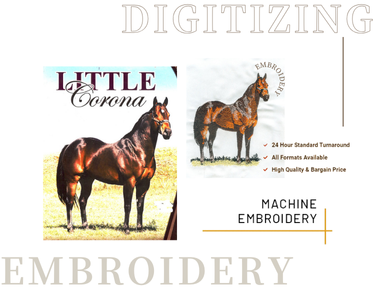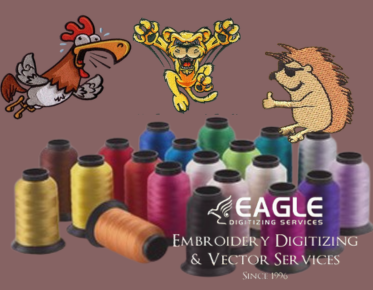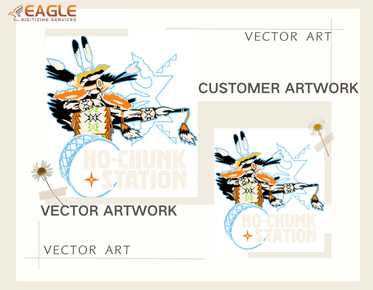Latest Trends in Embroidery Digitizing and Vector Art Design Services
In the ever-evolving world of embroidery digitizing and vector art design, staying ahead of the latest trends is crucial for businesses and enthusiasts alike. As technology advances, so do the techniques and applications of these creative fields. This blog explores the current trends in embroidery digitizing and vector art design, offering insights into how these trends are shaping the industry. Whether you're a seasoned professional or a newcomer, understanding these trends can help you stay competitive and innovative. For those looking to explore professional services, embroidery digitizing services offer a range of solutions to meet diverse needs.
Advancements in Embroidery Digitizing
1. Integration of AI and Machine Learning
Artificial Intelligence (AI) and machine learning are making significant inroads into embroidery digitizing. These technologies enable more precise and efficient design processes, reducing the time and effort required to convert artwork into embroidery files. AI algorithms can analyze complex patterns and suggest optimal stitch paths, enhancing the quality and consistency of the final product.
2. Cloud-Based Digitizing Software
The shift towards cloud-based solutions is another trend gaining momentum. Cloud-based embroidery digitizing software allows users to access their projects from anywhere, collaborate in real-time, and benefit from automatic updates. This flexibility is particularly beneficial for businesses with remote teams or those looking to streamline their workflow.
3. Customization and Personalization
As consumer demand for personalized products grows, the ability to offer customization in embroidery designs is becoming increasingly important. Modern digitizing software provides tools for creating custom names, monograms, and unique designs tailored to individual preferences. This trend is driving innovation in the industry, as businesses strive to offer more personalized options to their customers.
Trends in Vector Art Design
1. Emphasis on Minimalism
Minimalism continues to be a dominant trend in vector art design. Clean lines, simple shapes, and a focus on negative space are hallmarks of this style. Minimalist designs are versatile and can be easily adapted for various applications, from branding to digital media.
2. Use of Bold Colors and Gradients
While minimalism focuses on simplicity, the use of bold colors and gradients adds a dynamic element to vector art. Designers are experimenting with vibrant color palettes and smooth transitions to create eye-catching visuals that stand out in a crowded digital landscape.
3. Incorporation of 3D Elements
The integration of 3D elements into vector art is another trend gaining traction. By adding depth and dimension, designers can create more engaging and realistic visuals. This trend is particularly popular in advertising and digital marketing, where captivating imagery is key to capturing audience attention.
Application Scenarios
1. Fashion and Apparel
Embroidery digitizing and vector art design play a crucial role in the fashion and apparel industry. From creating intricate embroidery patterns for high-end garments to designing logos and graphics for casual wear, these services are essential for bringing creative visions to life. The ability to quickly adapt to changing fashion trends is a significant advantage for businesses in this sector.
2. Branding and Marketing
In the realm of branding and marketing, vector art design is invaluable for creating logos, promotional materials, and digital content. The scalability of vector graphics ensures that designs maintain their quality across different media, from business cards to billboards. Embroidery digitizing is also used to produce branded merchandise, such as hats and bags, enhancing brand visibility.
3. Home Decor and Interior Design
Embroidery digitizing is increasingly being used in home decor and interior design. Custom embroidered products, such as cushions, curtains, and wall hangings, add a personal touch to living spaces. Vector art design is also used to create decorative elements and patterns for wallpapers and textiles.
Future Trends and Considerations
Looking ahead, the future of embroidery digitizing and vector art design is likely to be shaped by continued technological advancements and changing consumer preferences. As AI and machine learning become more sophisticated, we can expect even greater automation and precision in design processes. Additionally, the demand for sustainable and eco-friendly practices is likely to influence the materials and methods used in these industries.
For businesses and individuals looking to stay ahead of the curve, investing in the latest software and tools is essential. Embracing new technologies and staying informed about industry trends can provide a competitive edge. Eagle Digitizing excels in providing professional embroidery digitizing services, ensuring every design is crafted with unmatched precision. As the industry continues to evolve, those who adapt and innovate will be well-positioned for success.



